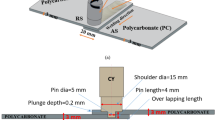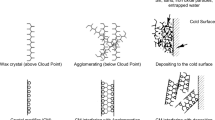Abstract
Magnetic flux leakage (MFL) principle is widely used in detecting defects in cross-country pipelines. The tools based on the MFL techniques termed as instrumented pipeline inspection gauge (IPIG) are frequently used as per statutory requirement. The tool identifies the location of metal loss and also characterizes the size of metal loss defects in terms of length, width along circumference and depth in terms of percentage loss. Tool velocity in terms of frequency of data acquisition is important parameter whose effect on the MFL signal and on the defect quantification has been studied. Operation of linear pull through rig under various combinations of MFL tool parameters such as velocity, frequency and spatial sampling has been developed. A set of experiments by varying velocity from 0.25 to 2 m/s keeping frequency constant at 450 Hz have been carried out. MFL signals obtained from all known defects have been analyzed for its nature and quantifying the dimension of defect. The effect of velocity on individual dimensions of the defect has been studied in this work. Within the limitation of the experiments carried out, the present work indicates that smaller defects cannot be reported with better accuracy. Also, the velocity is seen to have a significant effect in characterizing the length of the defect using IPIG especially for defects of larger area.






Similar content being viewed by others
References
A.J. Lynch, Magnetic Flux Leakage Robotic Pipe Inspection: Internal and External Methods. M.Sc. thesis, Rice University, 2009
U.N.K. Sahu, Finite Element Modeling of Magnetic Field in Pipeline. Master’s thesis, Indian Institute of Technology Madras, 2012
C. Varghese, Intelligent PIG Technology for Inline Inspection of Pipelines & Indigenous capabilities development, report
S. Saha, S. Mukhopadhyay, U. Mahapatra, S. Bhattacharya, G.P. Srivastava, Empirical structure for characterizing metal loss defects from radial magnetic flux leakage signal. NDT&E Int. 43(6), 507–512 (2010)
N.R. Pearson, M.A. Boat, R.H. Priewald, M.J. Pate, J.S.D. Mason, A study of MFL signals from a spectrum of defect geometries. 18th World Conference on Nondestructive Testing, 2012
A.A. Carvalho, J.M.A. Rebello, L.V.S. Sagrilo, C.S. Camerini, I.V.J. Miranda, MFL signals and artificial neural networks applied to detection and classification of pipe weld defects. NDT&E Int. 39(8), 661–667 (2006)
L. Yang, G. Liu, G, Zhang, S. Gao, Inspection and identification of inner-outer defects on oil-gas pipeline. 17th World Conference on Nondestructive Testing, 2008
S. Yang, Y. Sun, L. Udpa, S.S. Udpa, W. Lord, Application of perturbation methods in finite element analysis of stress corrosion cracking. IEEE Trans. Magn. 36(4), 1714–1718 (2000)
G. Katragadda, W. Lord, Y.S. Sun, S. Udpa, L. Udpa, Alternative magnetic flux leakage modalities for pipeline inspection. IEEE Trans. Magn. 32(3), 1581–1584 (1996)
S. Udpa, W. Lord, Y.-S. Sun, Numerical modeling of residual magnetic phenomena. IEEE Trans. Magn. 21(6), 2165–2168 (1985)
C.I. Nwoye, U. Okure, U. Odumodu, C.C. Nwoye, Effect of Velocity of Cleaning Pigs on the Efficiency of Fluid Delivery in the Pigged Pipeline System, report and opinion, 2009
Author information
Authors and Affiliations
Corresponding author
Rights and permissions
About this article
Cite this article
Narang, R., Chandrasekaran, K. & Gupta, A. Experimental Investigation and Simulation of Magnetic Flux Leakage from Metal Loss Defects. J Fail. Anal. and Preven. 17, 595–601 (2017). https://doi.org/10.1007/s11668-017-0286-3
Received:
Published:
Issue Date:
DOI: https://doi.org/10.1007/s11668-017-0286-3




